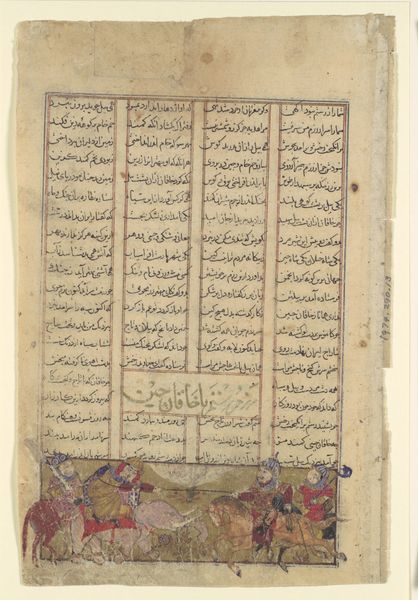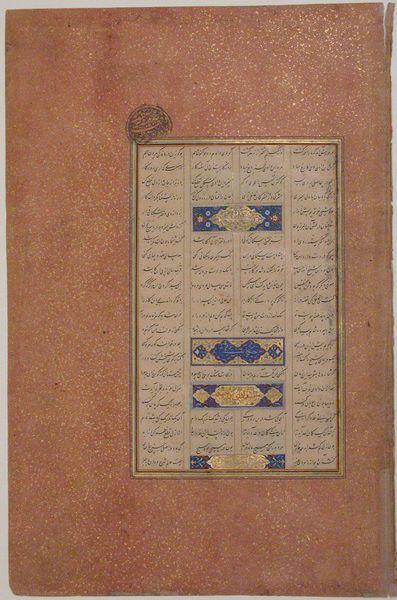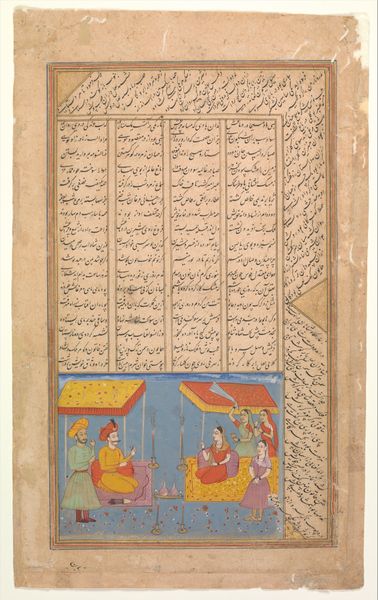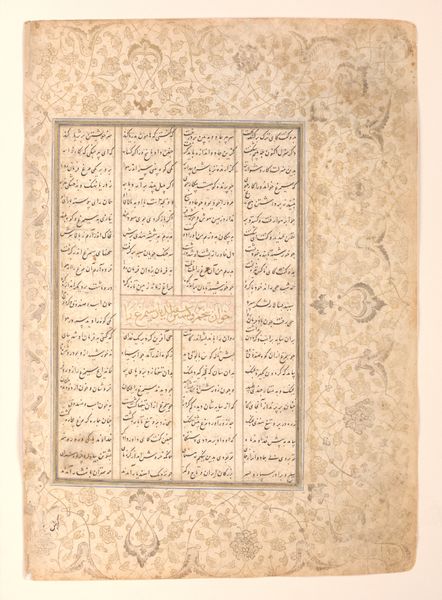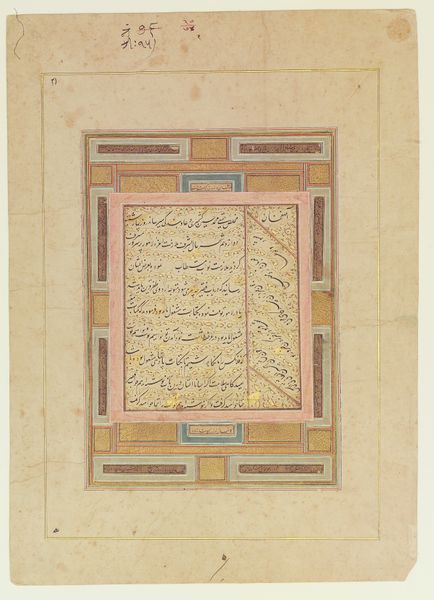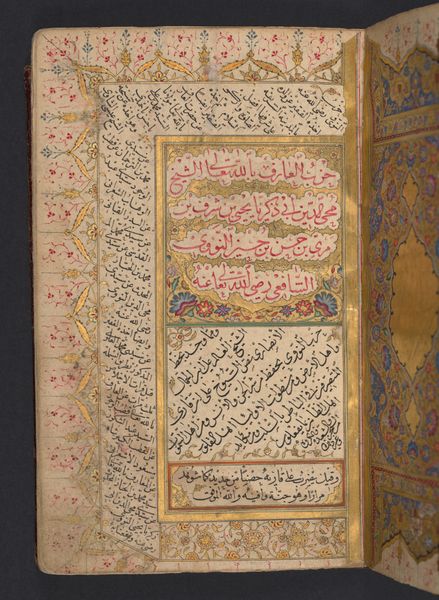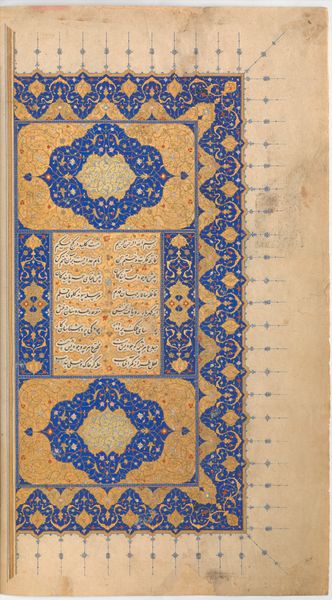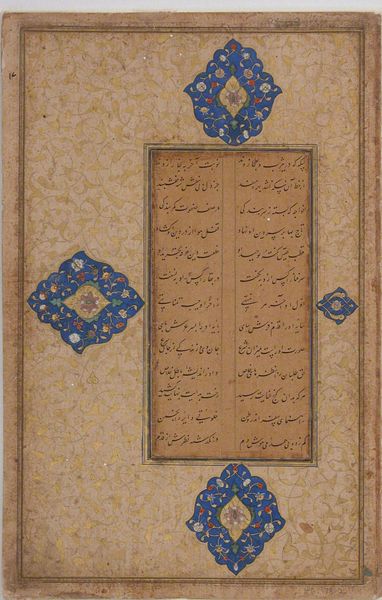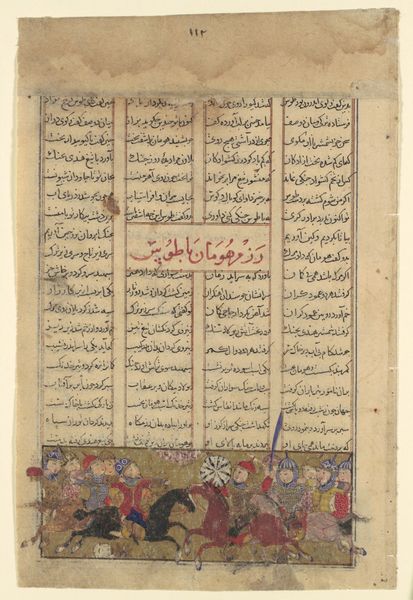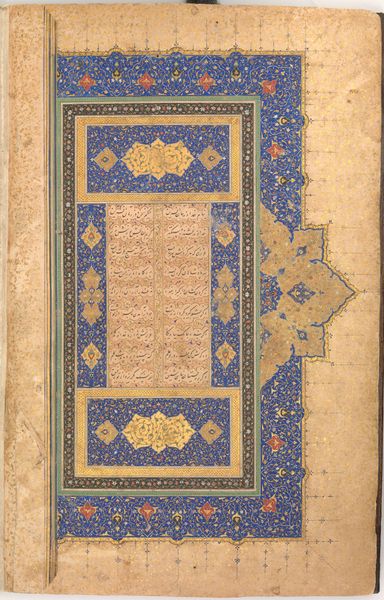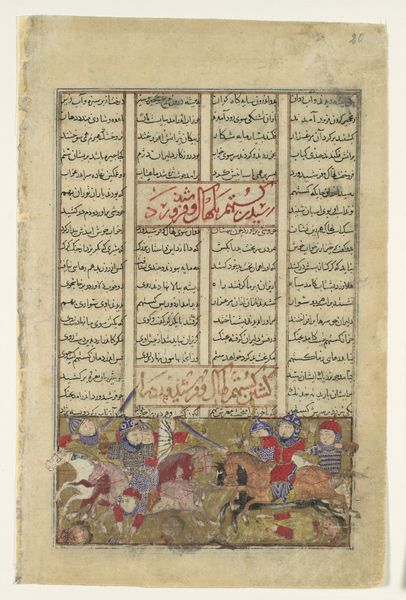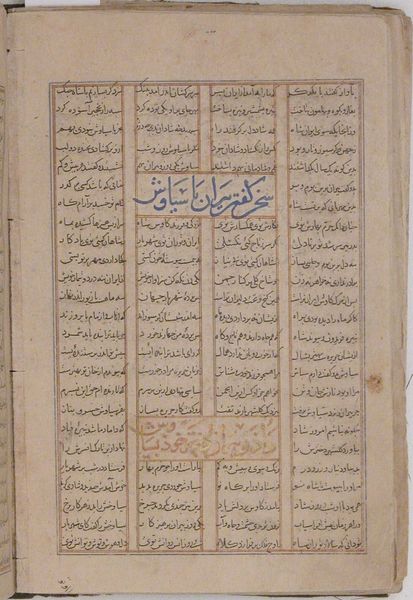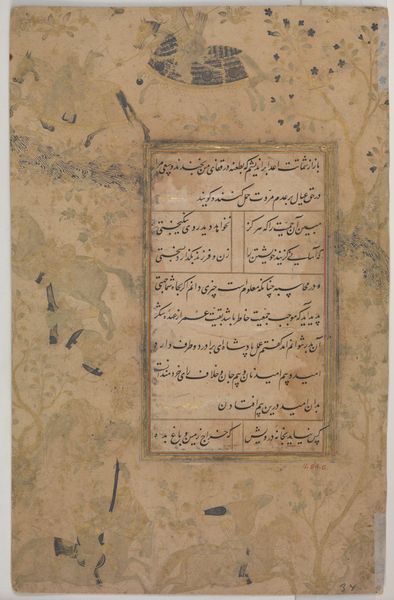
Page of Calligraphy from a Sharafnama (Book of Honour) of Nizami of Ganja 1595 - 1655
0:00
0:00
painting, paper, ink
#
water colours
#
narrative-art
#
painting
#
paper
#
ink
#
geometric
#
orientalism
#
islamic-art
#
miniature
#
calligraphy
Dimensions: H. 12 3/8 in. (31.5 cm) W. 7 15/16 in. (20.1 cm)
Copyright: Public Domain
Curator: Here we have a dazzling page of calligraphy extracted from a Sharafnama—or Book of Honour—of Nizami of Ganja, dated sometime between 1595 and 1655. It’s currently residing at the Metropolitan Museum of Art. What leaps out at you? Editor: The sheer decorative force of it! Before even trying to decode any meaning, I'm swept away by these complex geometric forms above the text blocks. It feels almost like gazing into a kaleidoscope, but a very ordered, stately one. Curator: Precisely. Notice the use of ink and watercolours on paper. This work isn’t just about textual transmission; it's an act of visual storytelling, of imbuing honor and prestige. Those arabesques... Editor: The script, aside from being gorgeous, presents itself almost as a field, right? I see not only the visual pleasure in each letterform, but how the whole functions symbolically. Perhaps it speaks of cosmic order translated into words. Each verse a reflection of the divine will made visible. Curator: A reflection indeed! What is also compelling is the commitment to geometry: The geometric figures at the top, juxtaposed against the organic flow of the script. Do you read some tension into that contrast? Editor: I see it more as a complementary dance, the push and pull. This feels less about tension and more about totality. Islamic art constantly seeks to portray wholeness by combining seeming contradictions. Word becomes image. Concept takes shape as pattern. There's so much embedded symbolism at play. Curator: It truly testifies to the artist's creative range – juggling calligraphic virtuosity, luminous palette, geometric sense. I love how even in such contained confines as a single page, entire worlds can blossom. Editor: I’m fascinated by how our understanding of such a fragment depends on an understanding of a vast cultural universe. And, despite being rooted in history, its visual language somehow keeps on feeling everlastingly potent.
Comments
No comments
Be the first to comment and join the conversation on the ultimate creative platform.
